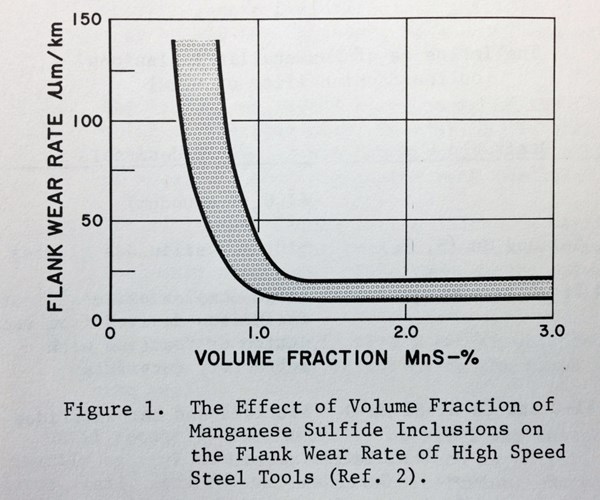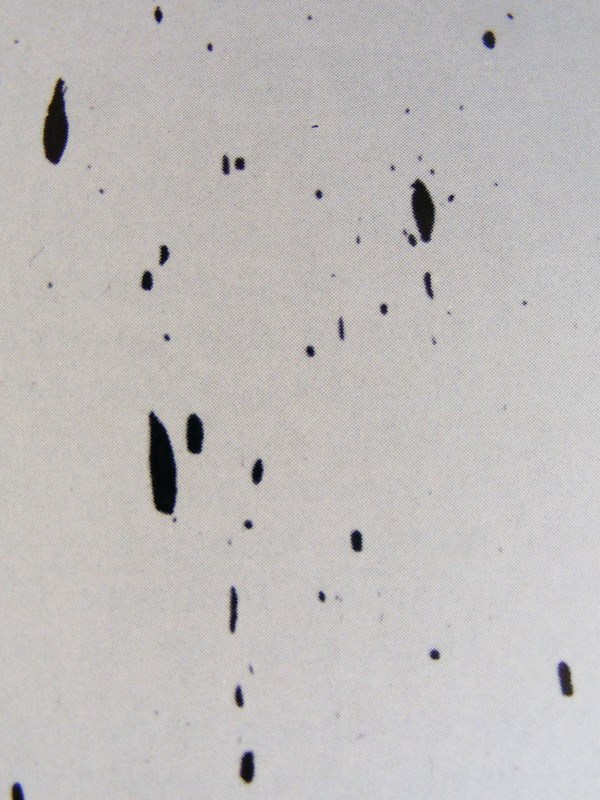Chemistry Determines Machinability
Flank wear is the “normal” failure mode for tools when machining steels. The volume fraction of manganese sulfides is a determinant of the tool’s wear rate.

Manganese and sulfur have a powerful effect in reducing flank wear on HSS tools.

Manganese sulfides are a separate internal phase.
Flank wear is the “normal” failure mode for tools when machining steels. The volume fraction of manganese sulfides is a determinant of the tool’s wear rate. “The wear rate of high speed steel tools decreases rapidly up to about 1 percent volume fraction of MnS and then levels off to a constant wear rate as the volume fraction is increased.“-Roger Joseph and V.A. Tipnis, “The Influence of Non-Metallic Inclusions on the Machinability of Free-Machining Steels.”
As sulfur rises beyond 1% volume fraction, surface finish improves, chips formed are smaller with less radius of curvature, and the friction force between cutting tool and chip decreases because of lower contact area.
How does manganese sulfide improve the machinability? The MnS inclusions act as “stress raisers” in the shear zone to initiate microcracks that subsequently lead to fracture of the chip. MnS inclusions also deposit on the wear surfaces of the cutting tool as “built-up edge (BUE).”
BUE reduces friction between the tool and the material being machined. This contributes to lower cutting temperatures. BUE mechanically separates or insulates the tool edge from contact with work material and resulting heat transfer. This is why resulfurized steels in the 11XX and 12XX series can be cut at much higher surface footage than steels with lower manganese and sulfur contents.
Read more about manganese in steel here.
Originally posted on PMPAspeakingofprecision.com blog.












.jpg;maxWidth=300;quality=90)


